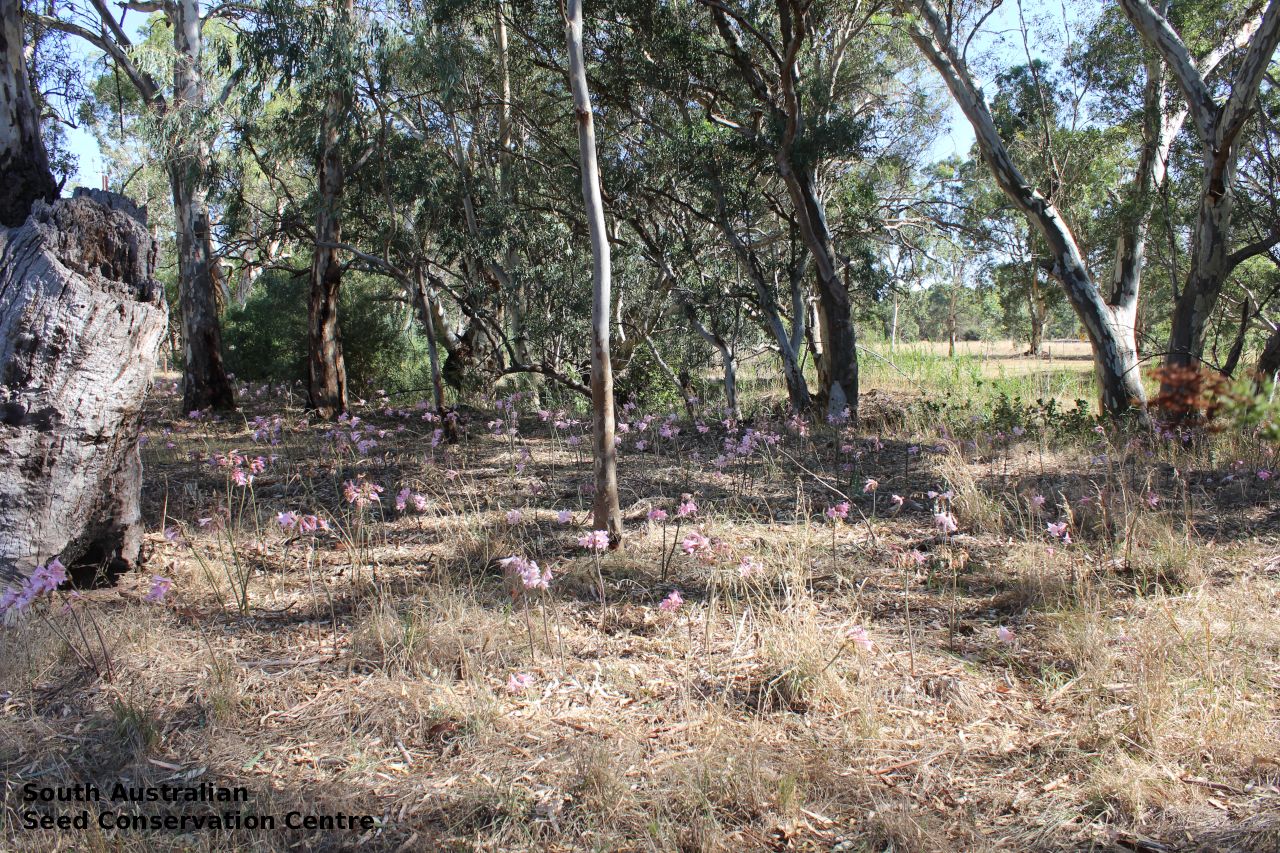

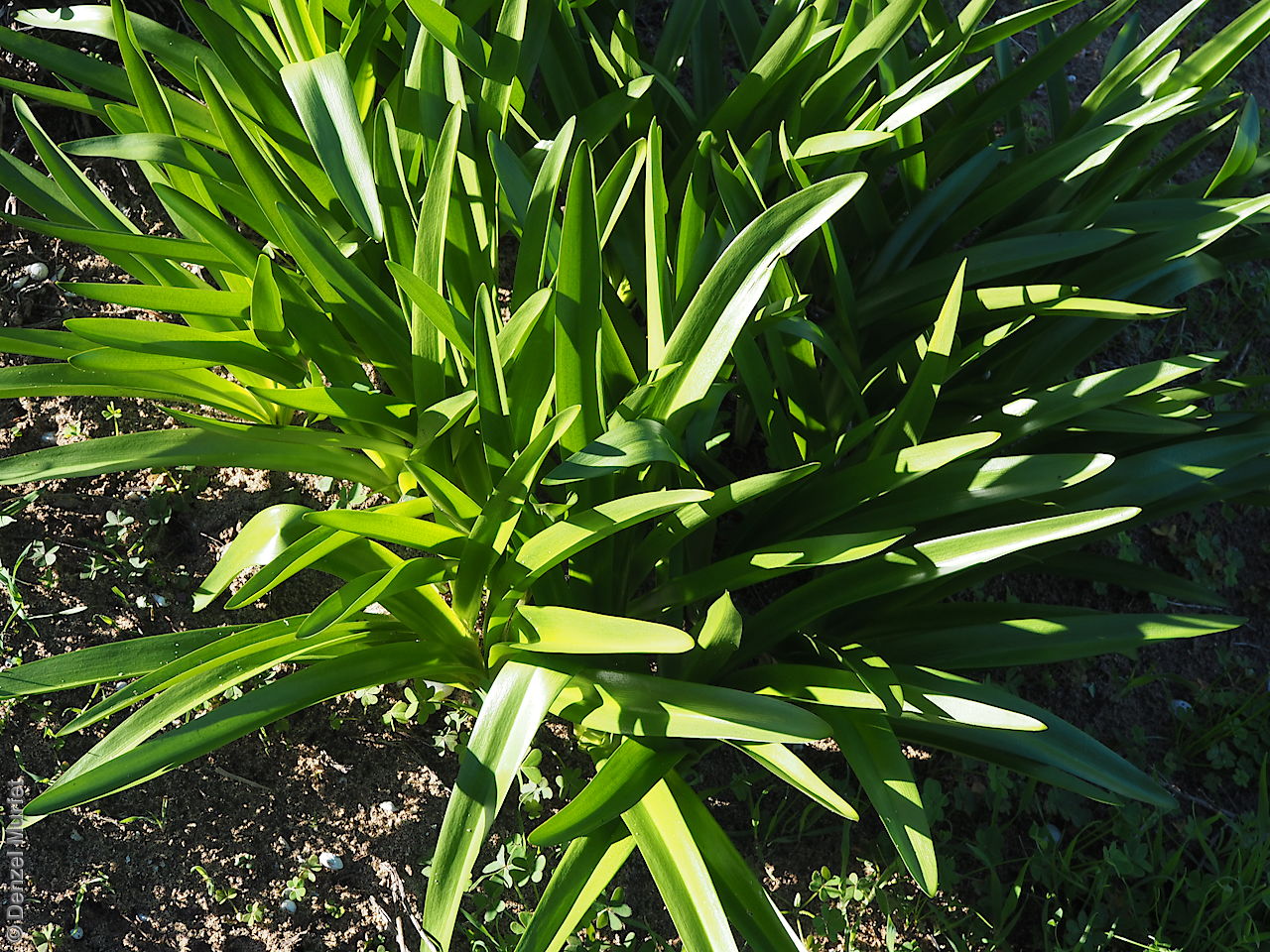
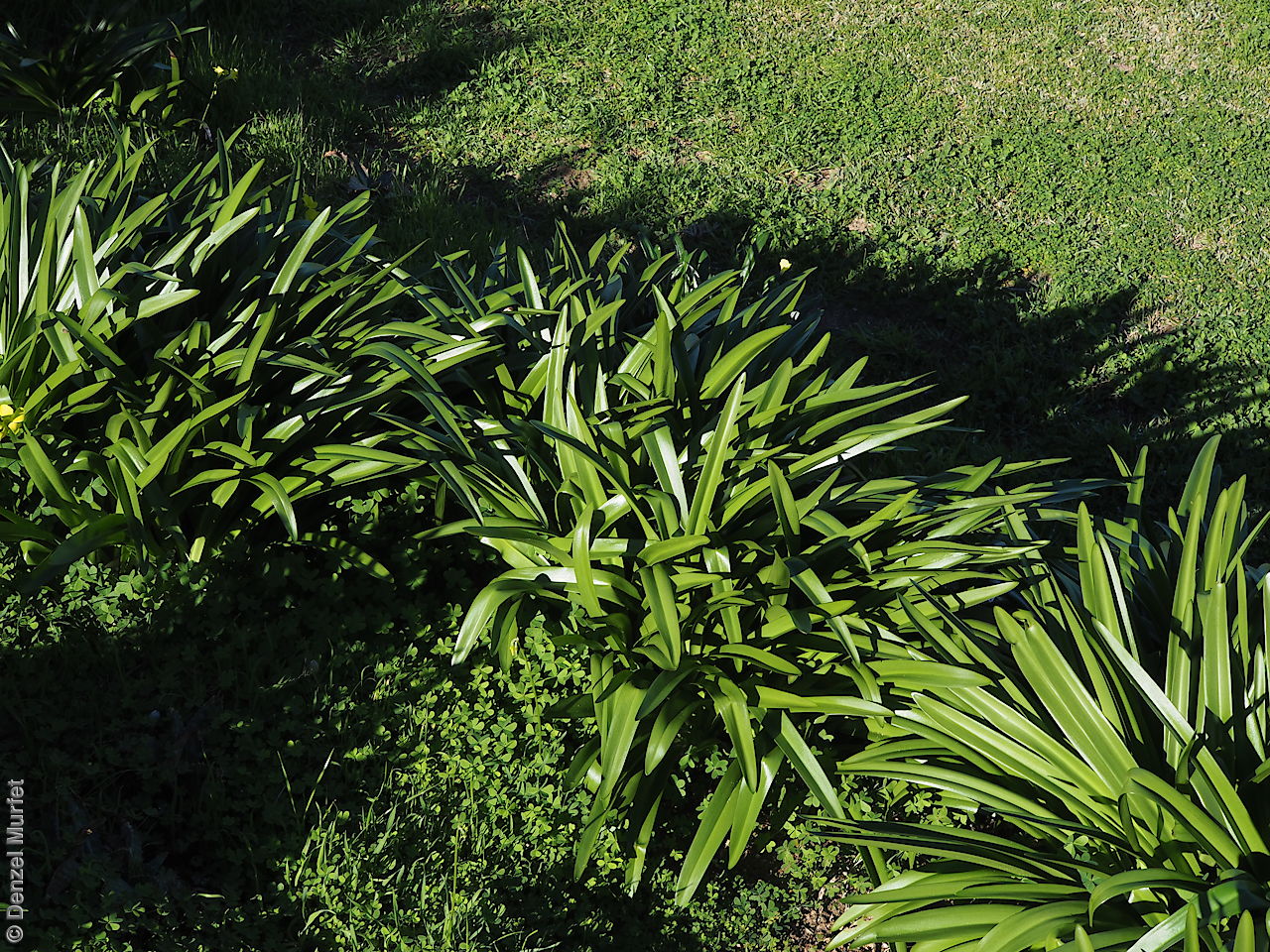
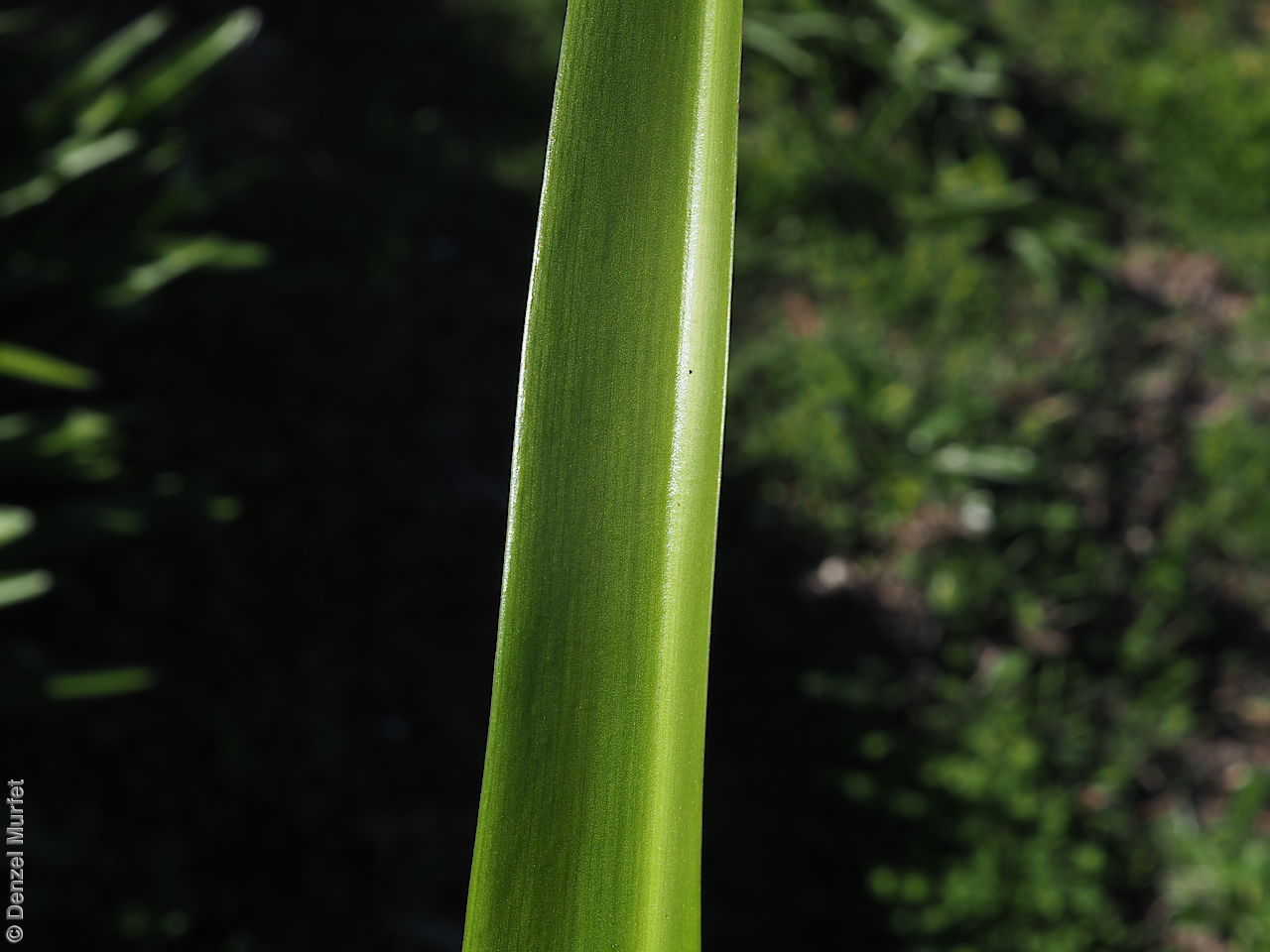


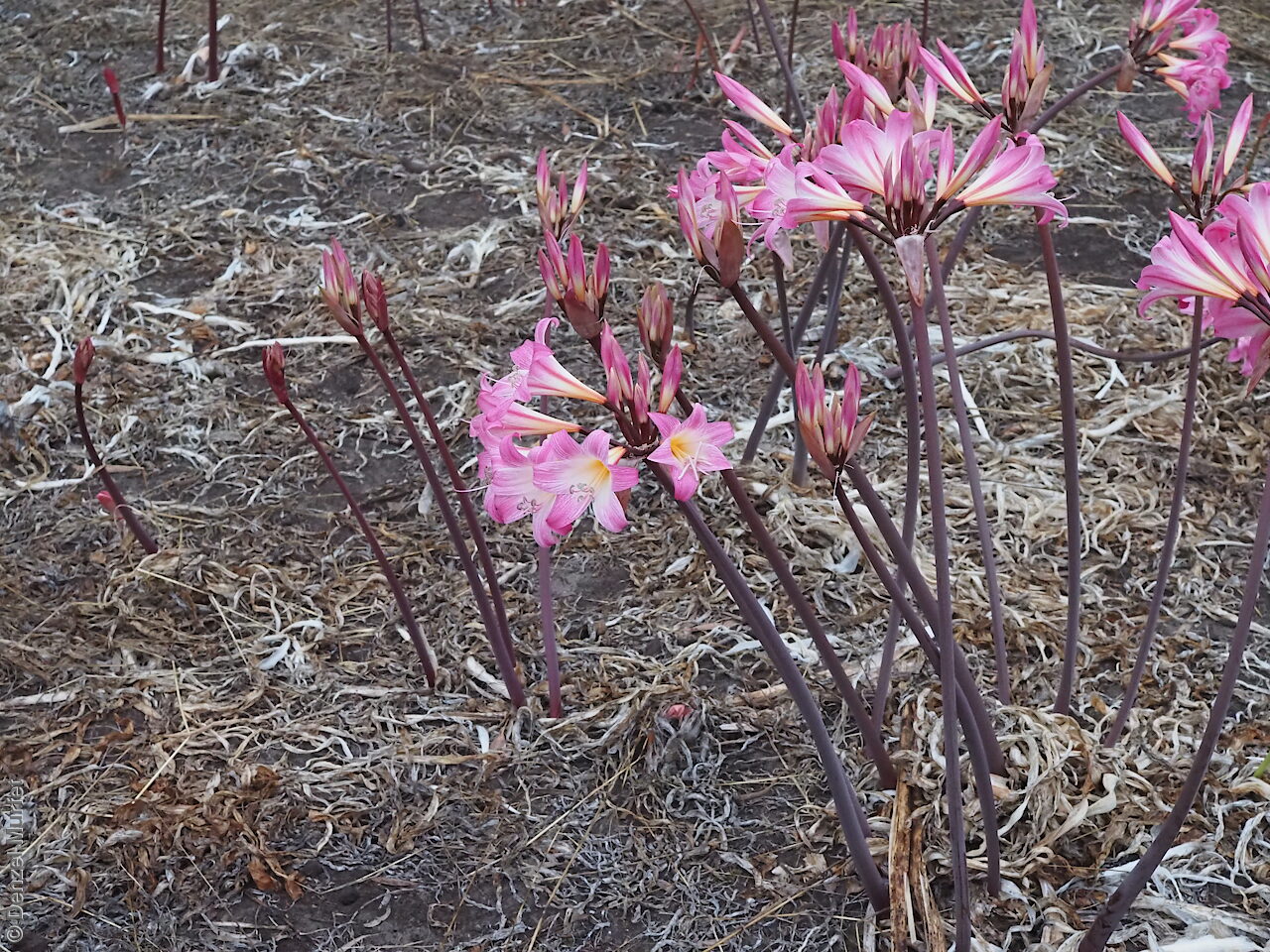
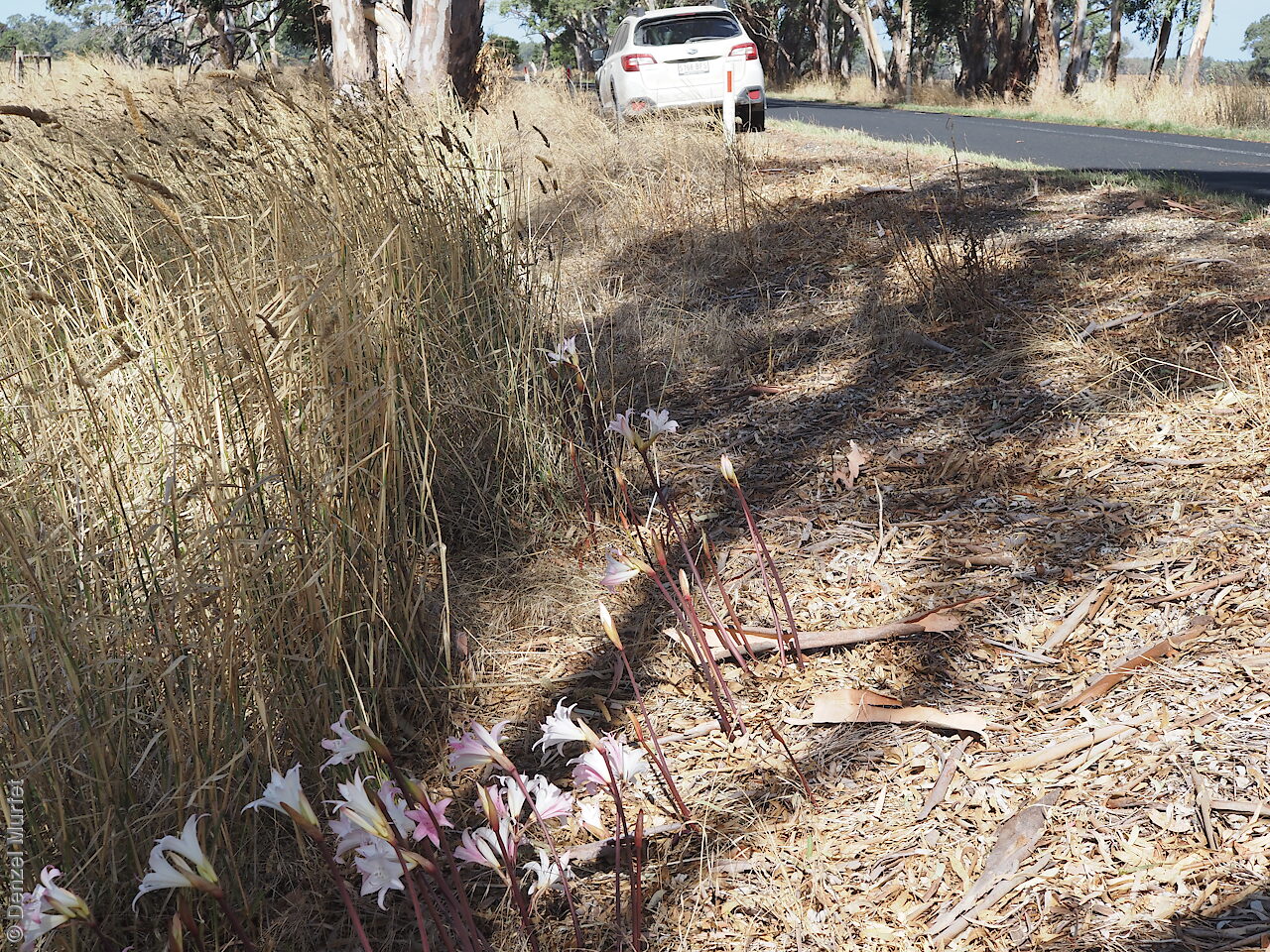
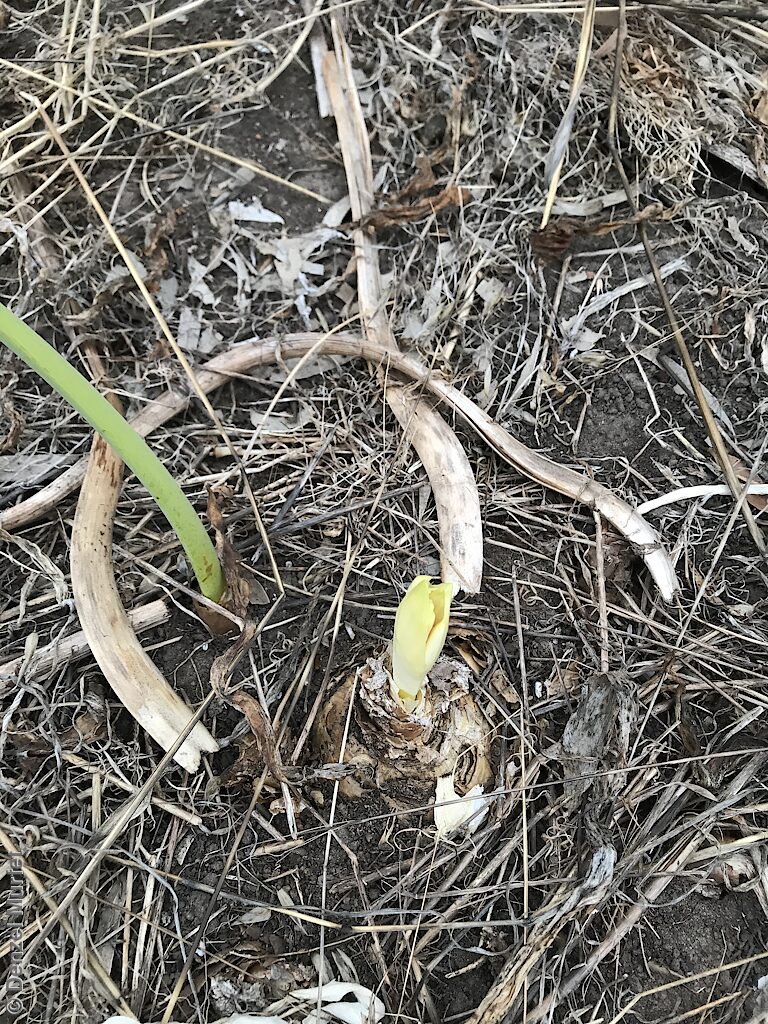


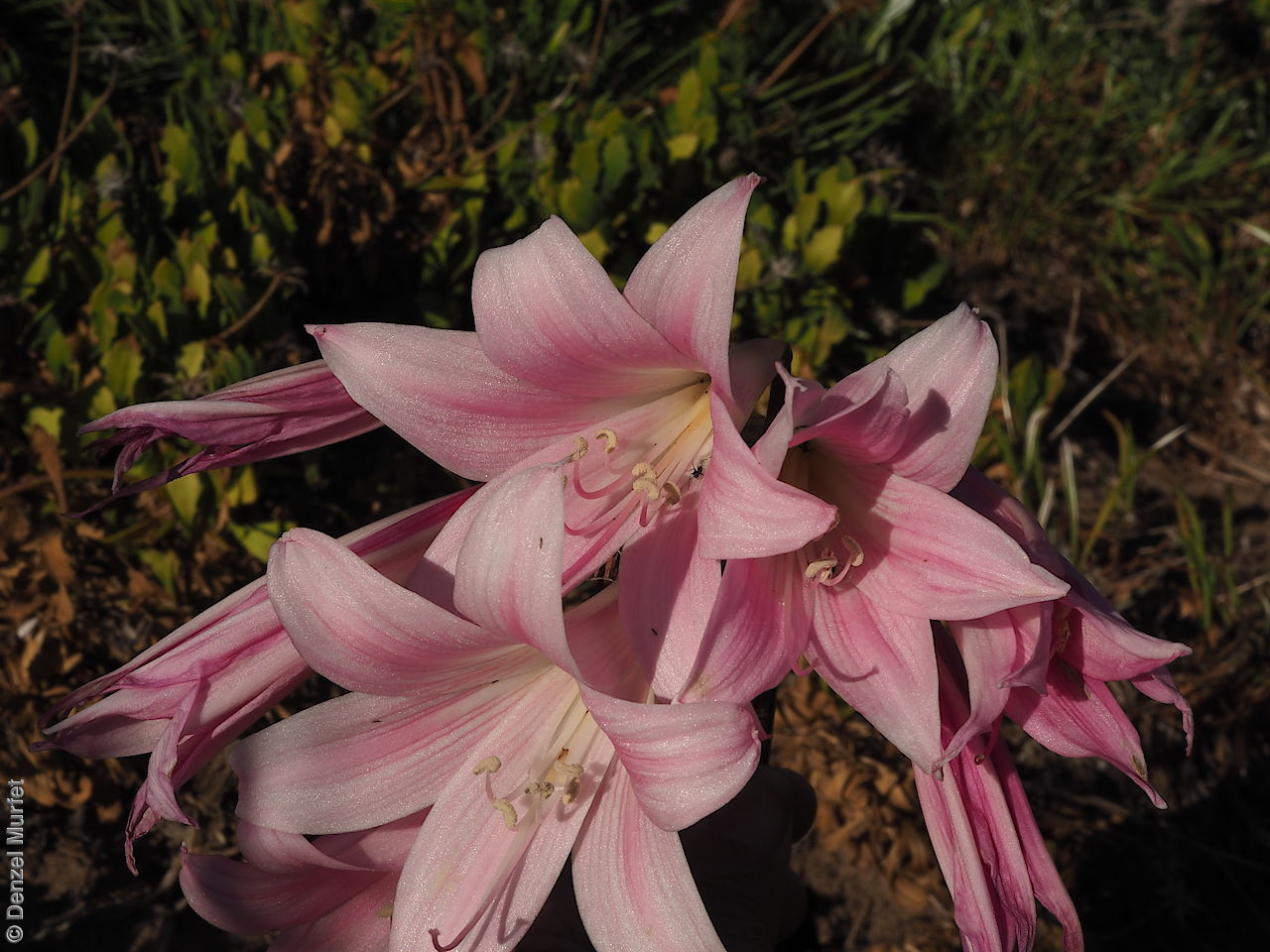
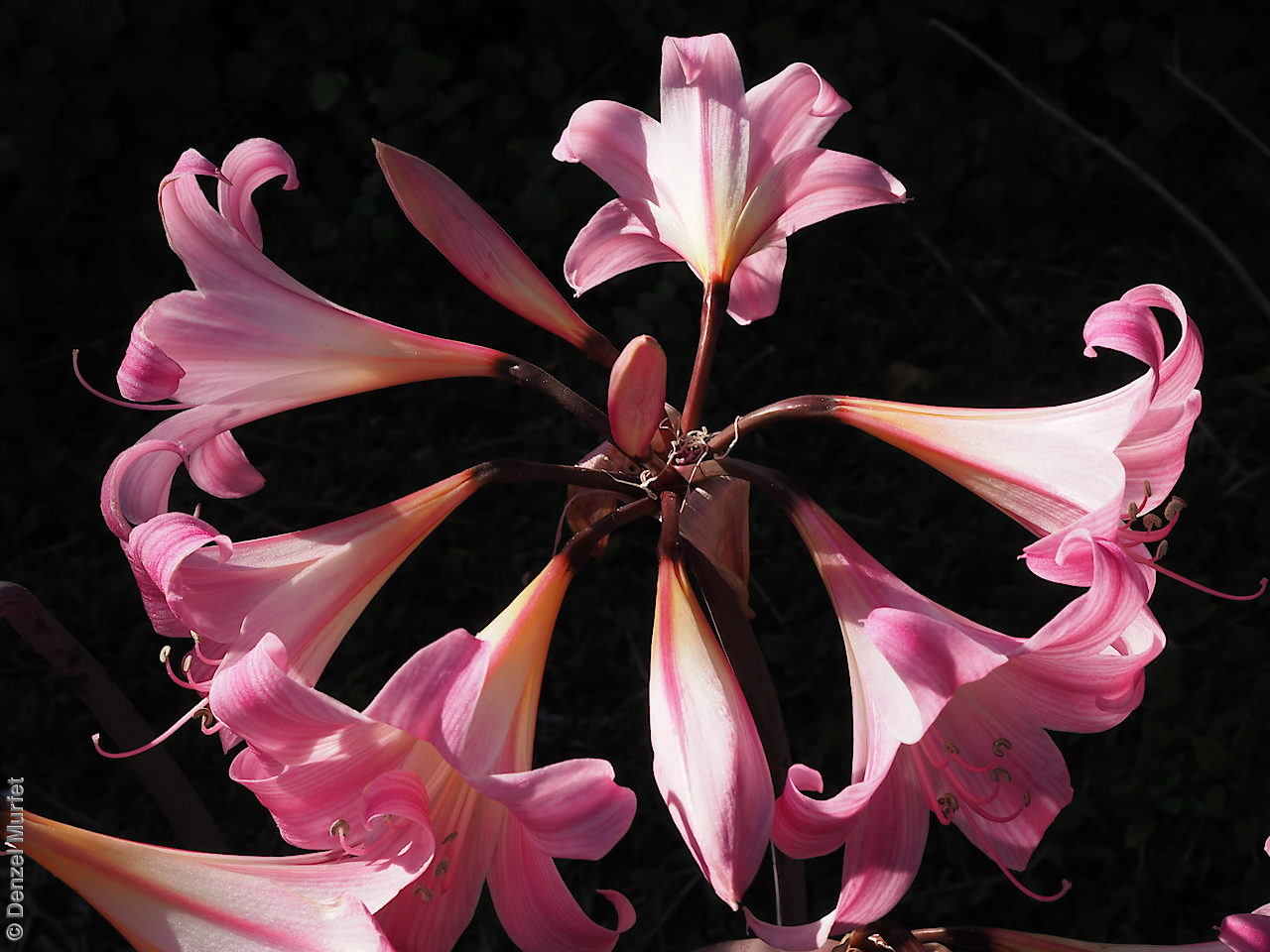
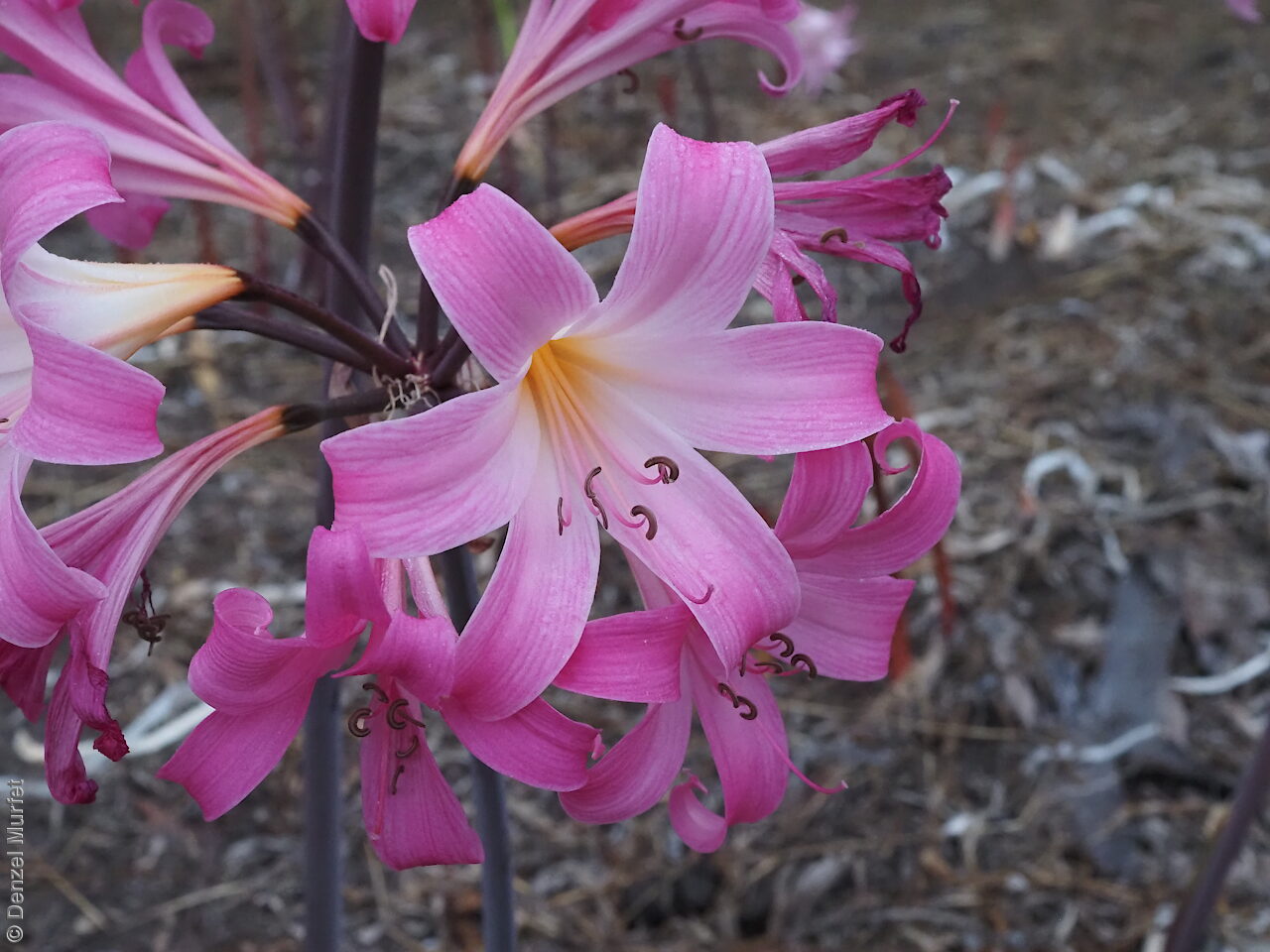
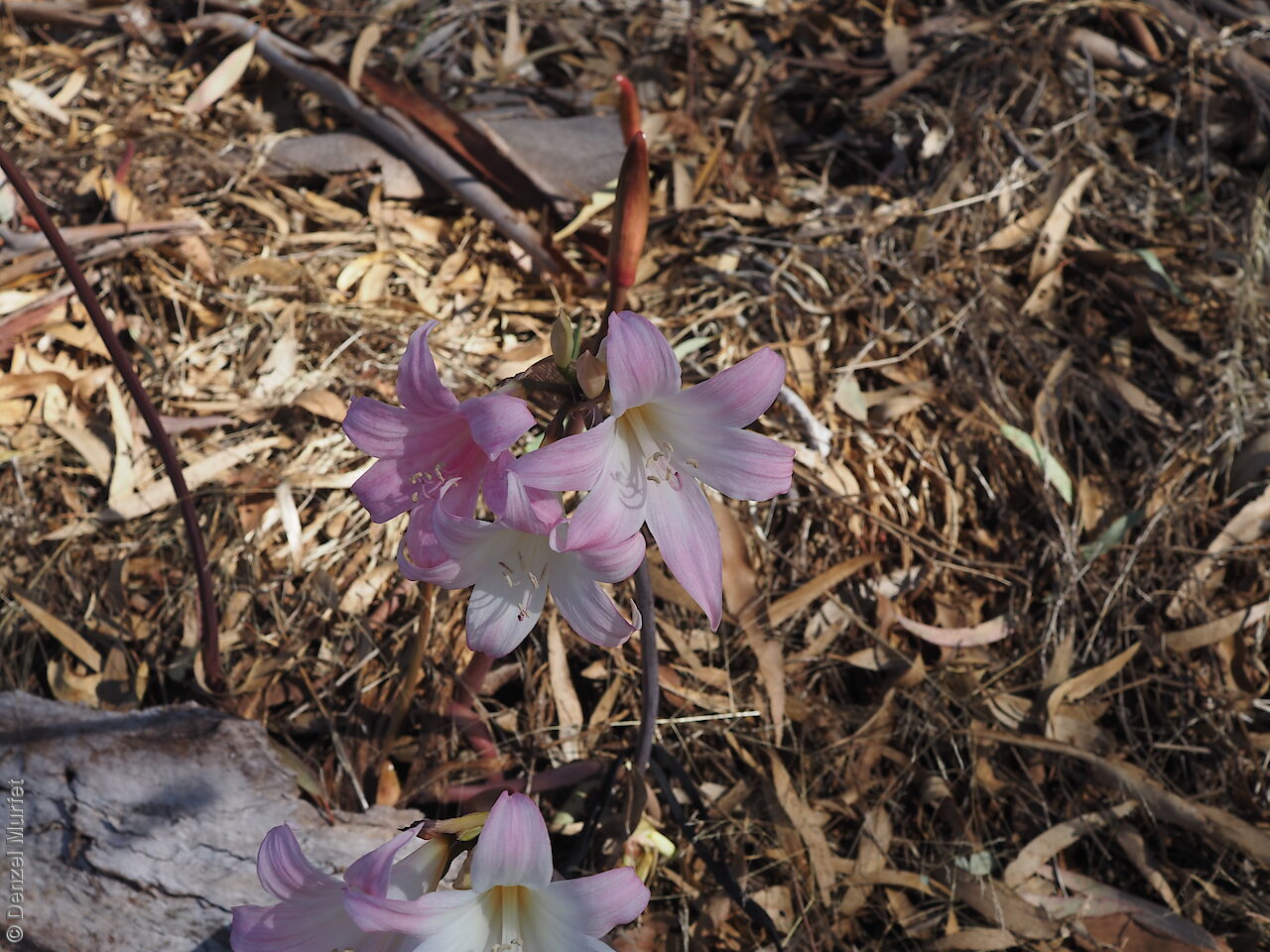


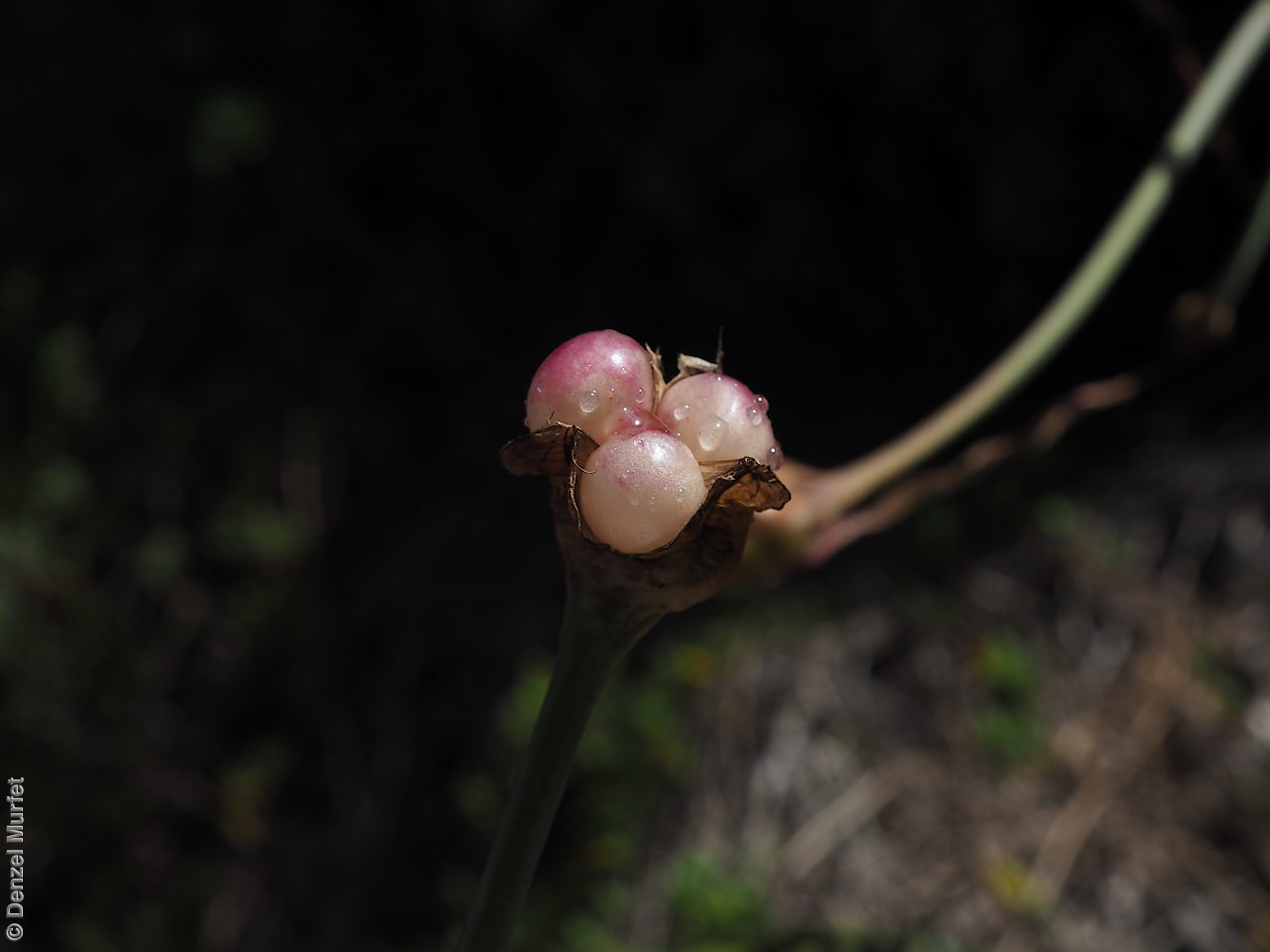
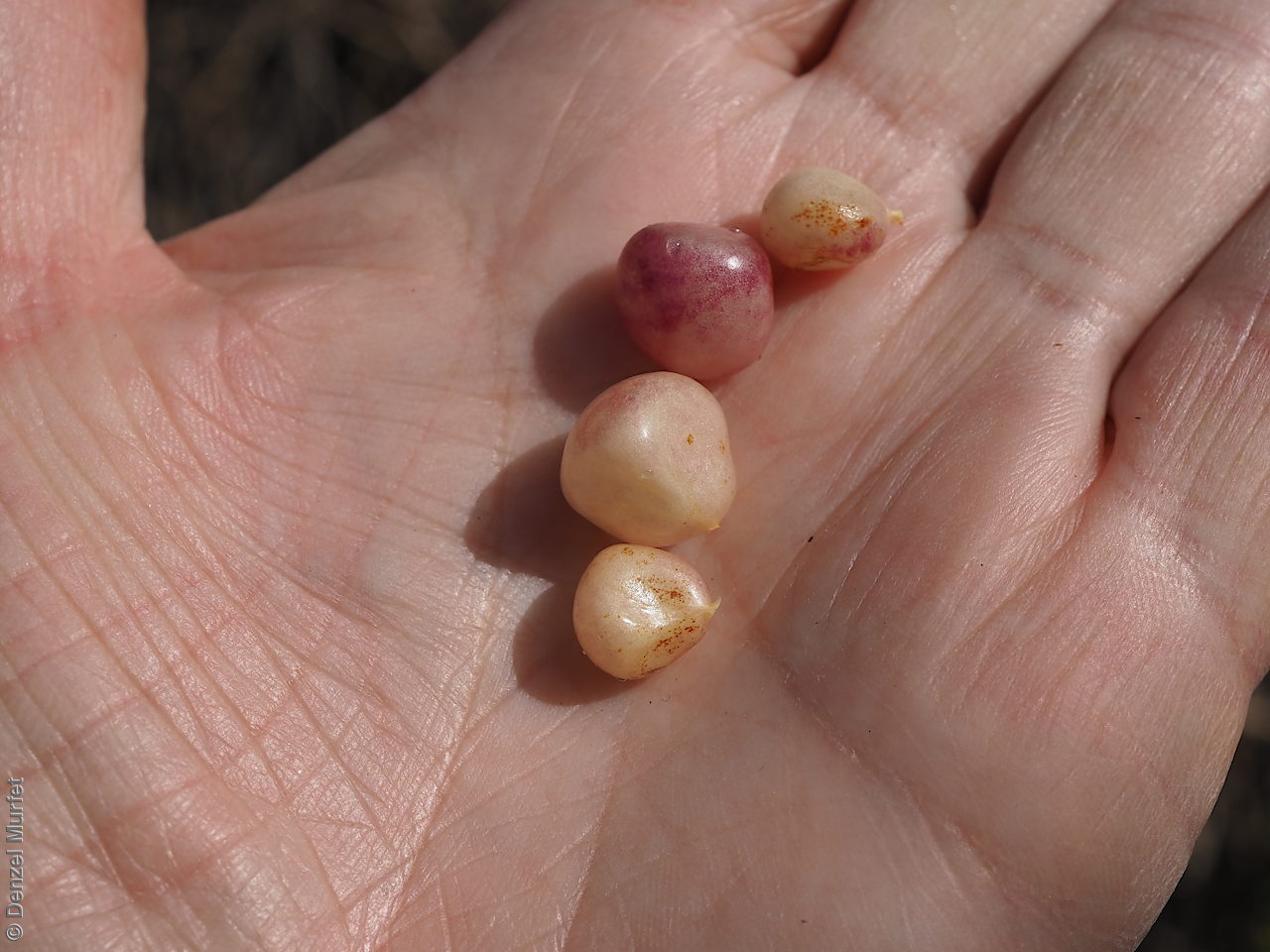


Botanical art
Common names
Naked Lady
Belladonna Lily
Naked Ladies
Etymology
Amaryllis was adopted by Linnaeus from Latin but derived from the Greek 'amarysso', a typical name for a country girl or shepherdess (in Greek mythology) and means to sparkle, twinkle. Also possibily from the Latin 'amarella' meaning bitter, referring to the bitterness of the bulb. Belladonna from the Italian bella donna, which means beautiful lady. The common name Naked Lady refer to the appearance of the tall, showy flowers before the leaves.
Distribution and status
Native to South Africa and now naturalised in the southern Flinders Ranges, Mount Lofty Ranges, Yorke Peninsula, Kangaroo Island and the South-east in South Australia. Also naturalised in Western Australia, New South Wales, Victoria and Tasmania. Introduced. Common in South Australia. Common in the other states.
Herbarium regions: Flinders Ranges, Northern Lofty, Yorke Peninsula, Southern Lofty, Kangaroo Island, South Eastern, Green Adelaide
AVH map: SA distribution map (external link)
Plant description
Perennial bulbous geophyte with onion-like bulb to 10 cm long. Leaves are linear, channelled to 45 cm long and 3 mm wide, appearing after flowering. Inflorescence cluster of 2–12 showy fragrant, funnel-shaped, pink or less commonly nearly white flowers at the end of a long stalk. Flowering between February and April. Fruits are round capsule to 2 cm with a number of fleshy, round seeds.
Seed collection and propagation
Collect seeds between May and July. Collect seeds that are on the ground or about to fall off the drying stalk. Seeds are recalcitrant (do not survive drying and freezing) and cannot be stored for long periods. Seed viability is usually high and will germinate without any treatment.